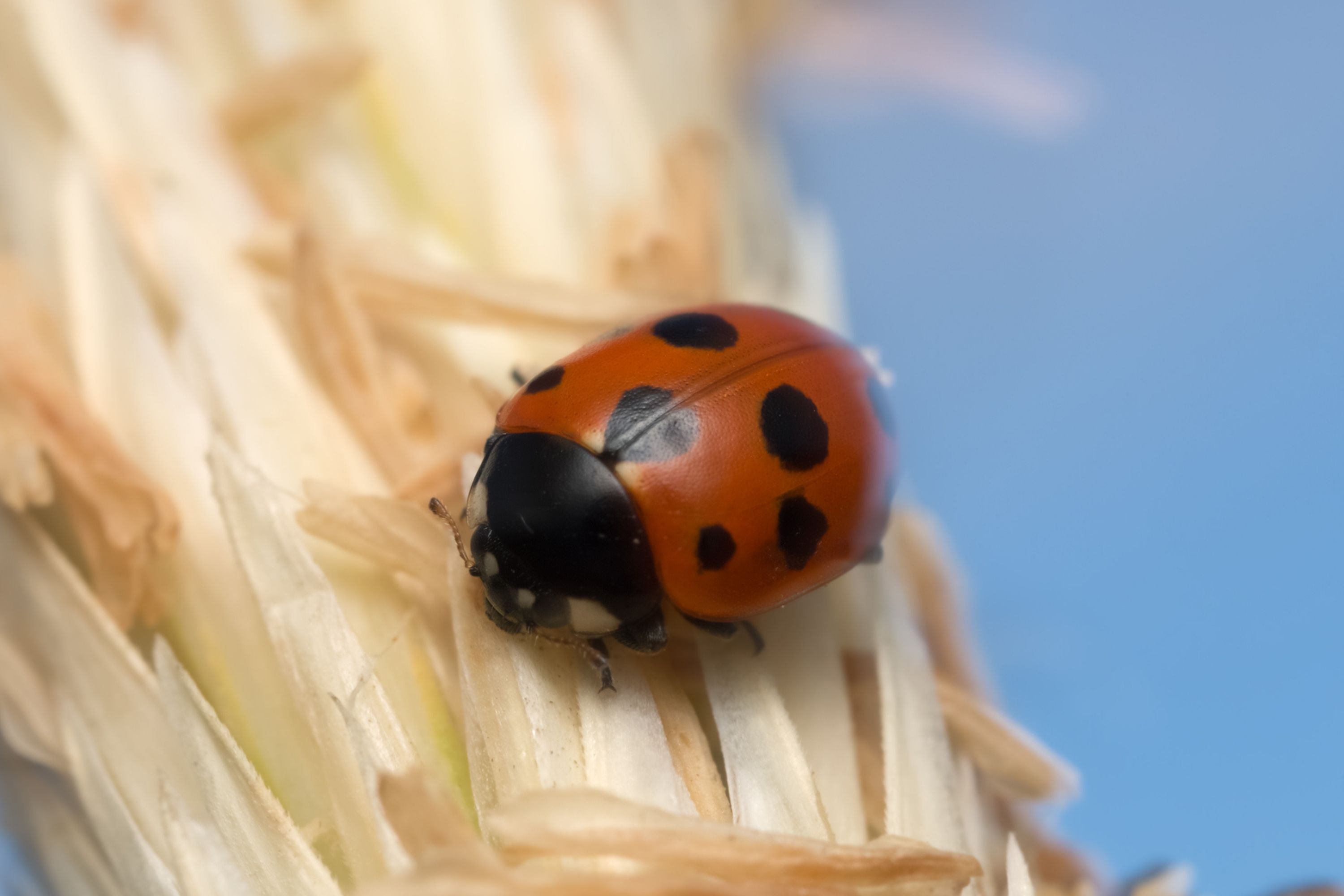Eleven-spotted Ladybird
(Coccinella undecimpunctata)

Description
Coccinella undecimpunctata, commonly known as the Eleven-Spotted Lady Beetle, is a species of lady beetle belonging to the family Coccinellidae. These small, colorful insects are widely recognized and appreciated for their role in biological pest control, as they feed on various agricultural pests, such as aphids and scale insects. The name "undecimpunctata" refers to the characteristic eleven black spots found on the elytra (wing covers) of this species. In this article, we will delve into the taxonomy, morphology, habitat, behavior, and ecological importance of Coccinella undecimpunctata. Taxonomy Coccinella undecimpunctata falls under the Animalia kingdom, Arthropoda phylum, Insecta class, Coleoptera order, and Coccinellidae family. The species name "undecimpunctata" is derived from the Latin words "undecim" meaning "eleven" and "punctum" meaning "spot," referencing the distinct spots found on the beetle's wing covers. Morphology The Eleven-Spotted Lady Beetle exhibits a typical lady beetle body structure. The adult beetles are generally small, measuring around 4-6 millimeters in length. They have a rounded shape with a dome-like appearance. The body is divided into three main sections: the head, thorax, and abdomen. The head of C. undecimpunctata is small and black, equipped with chewing mouthparts. It houses two compound eyes, antennae, and mouthparts used for feeding on plant pests. The thorax is broader than the head and consists of three segments: the prothorax, mesothorax, and metathorax. Each segment bears a pair of legs, enabling the lady beetle to move efficiently. The legs end in tarsi with adhesive pads, aiding in grip and mobility. The abdomen is the largest section of the beetle's body, composed of multiple segments. It is typically orange to red in color, marked with eleven distinct black spots on the elytra. However, variations can occur, and occasionally some individuals may display fewer or additional spots. Habitat and Distribution Coccinella undecimpunctata is widely distributed across various regions of North America, including the United States and Canada. These lady beetles are commonly found in agricultural landscapes, gardens, meadows, and grassy areas. They are adaptable insects and can thrive in diverse habitats, ranging from forests to urban environments. Behavior and Life Cycle The Eleven-Spotted Lady Beetle, like other lady beetles, is primarily carnivorous and feeds on soft-bodied insects, particularly aphids. These insects are considered beneficial predators as they help control pest populations, minimizing the need for chemical pesticides in agriculture. The life cycle of C. undecimpunctata consists of four stages: egg, larva, pupa, and adult. After mating, female beetles lay clusters of yellowish eggs on the undersides of leaves near aphid-infested plants. The eggs typically hatch within 3-5 days, and the larvae emerge. The larval stage is characterized by a long, elongated body with six legs and a segmented appearance. C. undecimpunctata larvae have a voracious appetite and consume aphids and other soft-bodied insects for about 2-3 weeks. During this period, they undergo several molts, shedding their exoskeletons as they grow. Once the larval stage is complete, the larvae enter the pupal stage, during which they transform into the adult beetles. Pupation takes place within a cocoon-like structure called a pupa. The pupal stage lasts for about 7-10 days, after which the adult lady beetle emerges. The adult Coccinella undecimpunctata beetles are active during the warmer months, typically from spring to early autumn. They are diurnal insects, being most active during the day. Adult beetles continue their predatory behavior, consuming aphids and other soft-bodied insects to meet their nutritional needs. During periods of colder weather, C. undecimpunctata beetles often seek shelter in protected areas, such as leaf litter, tree bark crevices, or other suitable hiding spots. They may also aggregate in groups, forming lady beetle clusters to conserve heat and increase their chances of survival during the winter. Ecological Importance Coccinella undecimpunctata plays a vital role in maintaining ecological balance and promoting sustainable agriculture. As voracious predators of aphids and other plant pests, these lady beetles help regulate pest populations and reduce the need for chemical pesticides. By feeding on aphids, they prevent these pests from causing extensive damage to crops, thereby protecting agricultural yields. The presence of C. undecimpunctata and other lady beetle species in ecosystems also has cascading effects on other organisms. By controlling aphid populations, they indirectly support the survival of beneficial insects that rely on aphids as a food source. Additionally, lady beetles serve as a valuable food source for a variety of predators, including birds and other insectivorous animals. Conservation While Coccinella undecimpunctata is considered a common and widespread species, it is still important to monitor and conserve their populations. Habitat destruction, widespread pesticide use, and the introduction of non-native lady beetle species can pose potential threats to the native populations of C. undecimpunctata. To promote the conservation of Eleven-Spotted Lady Beetles and other beneficial insects, several strategies can be implemented. These include minimizing the use of broad-spectrum pesticides, promoting agroecological practices that support biodiversity, creating suitable habitats through the inclusion of native plants in gardens and agricultural landscapes, and raising awareness among farmers and the general public about the ecological importance of these insects. Conclusion Coccinella undecimpunctata, the Eleven-Spotted Lady Beetle, is a remarkable insect known for its striking appearance and valuable role in biological pest control. With its distinct black spots and voracious appetite for aphids, this species has earned its place as a valuable ally to farmers and gardeners alike. By understanding and appreciating the ecological significance of C. undecimpunctata, we can strive to conserve its populations and foster sustainable practices that benefit both agricultural systems and natural ecosystems.
Taxonomic tree:







